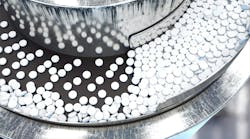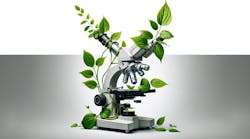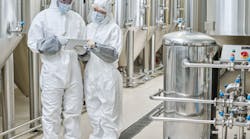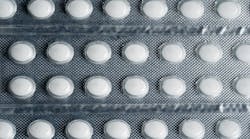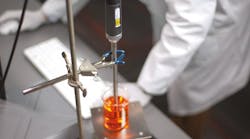As we enter the age of precision and personalized medicines, cell and gene therapies will increasingly play a prominent role, not only for patients with rare diseases, but also for those with more common illnesses such as cancer or cardiovascular disease. With this in mind, it is critical that biopharmaceutical manufacturing processes are able to supply these medicines in sufficient quantities to meet demand. That demand ranges from relatively small (for medicines that are highly potent or destined for the treatment of rare diseases), to relatively large (for drugs needed in high dosages or to treat more common disorders). The greater complexity of cell and gene therapies compared with traditional small molecule and biological drugs introduces new challenges in bioprocessing and manufacture.
Several companies in the industry are now helping develop new technologies and methodologies designed to meet these challenges, but this means that new assessments, guidances and regulations are required from regulatory bodies. These are just some of the challenges that underlie the questions being raised about how we can produce cost-effective therapies at the required industrial scales.
This gives us a sense of déjà-vu since the same challenges arose 30 years ago with the development of monoclonal antibodies (mAbs). So, to address current gene therapy manufacturing challenges, we should leverage lessons from the past.
What we learned from mAbs
Major advances like optimization of expression systems, cell line modifications and customization of cell culture media enabled the production of mAbs at very high productivity levels. In fact, these advances have led to a 100-fold increase over three decades in mAb concentration produced from engineered cells.
At the same time, improved downstream separation methods significantly increased the yield of recovery, while improving product safety. For mAbs, downstream yields have increased up to 80 percent over the last 30 years; for viral vectors, the current yield is about 30 percent (varying from approximately five to 60 percent). These improvements required a concerted effort combining both biological and engineering expertise. The same collaboration between disciplines will be key to making gene and cell therapies accessible to a large population at an affordable price.
That said, producing viruses is not the same as producing mAbs. There are more complex requirements at virtually every stage of the process, making it necessary to consider each bioprocess step, while still being mindful of the overall process. For example, unlike with mAbs, the use of stable producer cell lines grown in suspension mode is substantially more complicated with viral vector production due to the toxicity of the virus to the producer cells. This has limited the possibility to develop high productivity producer cell lines. In most cases a higher virus titer is achieved when growing the cells in adherent mode, using plastic flasks and bottles, which considerably reduces the ability to scale-up the process.
Optimizing each phase of production
To address the scalability and productivity issues, upstream processes can be transferred from flatware to three-dimensional fixed-bed bioreactors. This type of bioreactor is well suited for the production of viruses because it allows cells to grow to a high density, at the surface of a porous material, in a carefully controlled environment optimized for adherent cell culture. The bioreactor is designed to enable perfusion and recirculation with low shear stress on the cells, to provide optimal gas exchange, nutrient supply and by-product elimination.
The seed train protocol can also be optimized and simplified to further maximize the achievement of high cellular density in the bioreactor. Further, cell culture conditions — such as the media, temperature, pH, media linear speed, (which affects nutrient usage by the cells and gas exchange), and aeration — can be defined, to better achieve consistently high productivity. For adeno-associated virus (AAV), the most commonly used virus for viral vectors in gene therapies, batches yielding >1016 viral genomes can routinely be achieved using an automated, single-use, fixed-bed bioreactor.
The downstream process must also be optimized. Chromatography and filtration steps can be designed to achieve maximum virus separation and purification. For example, empty or incomplete capsids that can reduce the viral potency and create immune reactions can be effectively removed, along with other impurities such as double-stranded DNA, cells and cellular proteins, through the use of an anion-exchange chromatography membrane technology. The final concentration and formulation of the virus preparation can also be designed to maintain the maximized virus yield. Such refinements at every relevant stage of the entire bioprocess can significantly increase the productivity and reduce the cost of viral vector manufacturing.
Adding advanced technologies
Even further improvement is achievable by implementing continuous manufacturing techniques. Having recognized how continuous manufacturing has transformed other sectors, such as the automotive, and food and beverage industries, it is no wonder that the biopharmaceutical industry is now considering a shift from conventional batch production to continuous biomanufacturing. In anticipation and encouragement of this much needed advance, several companies have invested heavily into the development of end-to-end integrated platforms, consisting of innovative enabling technologies and unit operations that can bolt together in manifold ways to optimally manufacture on an industrial scale a variety of biopharmaceuticals including recombinant proteins and mAbs, but also viral vectors such as lentiviruses or AAV.
Continuous bioprocessing has been developed for monoclonal antibodies. Compared to batch processing, continuous can reduce the footprint of a manufacturing site by anywhere from 40-90 percent and reduce both operating expense (OpEx) and capital expenditure (CapEx) by up to 60 percent. Having demonstrated that continuous manufacturing of mAbs reduces the operating and capital costs, the time to process and the facility footprint, while securing a high and consistent product quality, we are developing a similar process to produce viral vectors with the same high expectations. By working closely with customers to understand their existing processes, identify the process needs, and define the manufacturing objectives, vendors can customize the entire platform, providing solutions tailored to the bioprocessing of gene therapy viral vectors. The immediate benefit of implementing continuous bioprocessing for viral vectors will be a significant increase in yield of product recovered since residence time in the continuous mode is reduced when compared to batch processing.
If compliance requirements, such as those for current Good Manufacturing Practices (cGMP), are addressed, companies can tackle issues and troubleshoot at the outset and avoid more costly issues further down the line. For instance, by including single-use components that contribute to minimizing potential sources of contamination, as well as reusable components, companies can reduce operation and capital investment costs. An integrated approach, which encompasses the hardware, consumables and automation for both unit operations and the entire bioprocess, should enable companies to develop and implement a more cohesive design that meets the requirements of the entire bioprocess as a whole.
To facilitate such an approach, the design can be made with the use of tools such as those using virtual reality (VR). Recent VR platforms have been developed to allow customers to walk through the biomanufacturing facility at the design stage. This gives them the opportunity to check that the space and infrastructure are set up and laid out to enable the easy manipulation and use of the equipment, for example, making sure that there is enough space to assemble and disassemble single-use bioreactors into the manifold. That way, adjustments could be made “on paper,” avoiding costly changes later on, after the facility or its components are constructed.
Transitioning into the future
These are just a number of ways that costs can be reduced, and cost effectiveness built into the bioprocessing and manufacture of cell and gene therapies. By moving to continuous processing, biopharmaceutical companies are experiencing the benefits of improved process economics, increased process design flexibility, shorter development times, and easier scale-up/down.
During the transition, the industry has been working closely with regulators to come up with rules that ensure patient safety remains at the forefront. If we produce these promising, novel cell and gene therapies continuously, we will bring them to market and clinic sooner, and make precision and personalized regenerative medicines a reality for patients the world over.

